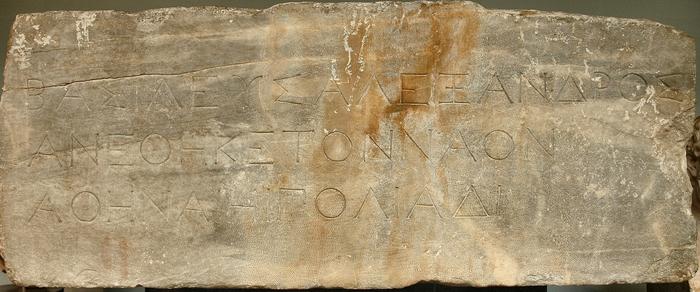This stone carving is from the temple dedicated to Athena Polias at Priene, found in modern day eastern Turkey. The temple was built by Alexander the Great, which is witnessed by the first words ‘Basileus Alexandros’, King Alexander. It was built while Alexander was besieging the nearby city of Miletus. What drew me to it (in the British Museum) is that it is reputed to contain the earliest example of serif writing.
In a distant life I had some experience of typesetting and graphic design, and I always found font design intriguing. Serifs are the finishing parts of letters, those curly bits which give the letters their style. They also serve a purpose: they lead the eye. When we look at non-serif print such as this type we are reading, it can be tiring to the eye. Serifs serve to lead the eye on to the next letter or word. Non-serif lettering tends to jump out at us and is normally found as title or headline print. Back to the stone…
You can see that the arms of the individual letters in the carving flare at the ends. This was unique at its time. Prior letter carvings were formed by straight non-serif lines. It is thought that this is inspired in part by cuneiform, the writing method of the ancient Sumerians, which consisted of wedge shaped impressions in clay. However, it is unlikely that the scribe/mason simply decided to finesse his work with a little creative license. Alexander was a bit of a multi-culturalist. For example, after defeating the Persians and acquiring their empire he began to wear Persian garb at court and married a Persian princess by the name of Roxanne. He also encouraged his generals, in the first instance, and his solders to marry Persian women. He settled these in new cities he founded and named after himself – Alexandria. Not surprisingly many of his followers resented this. Still, he was ahead of his time in many ways and he wasn’t given the epithet ‘The Great’ for nothing. So, for me, this piece of stone evokes a lot of human history and represents a part of the journey of our progress through the ages.

